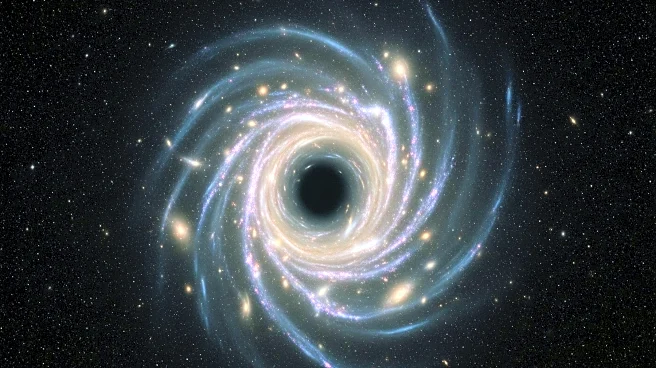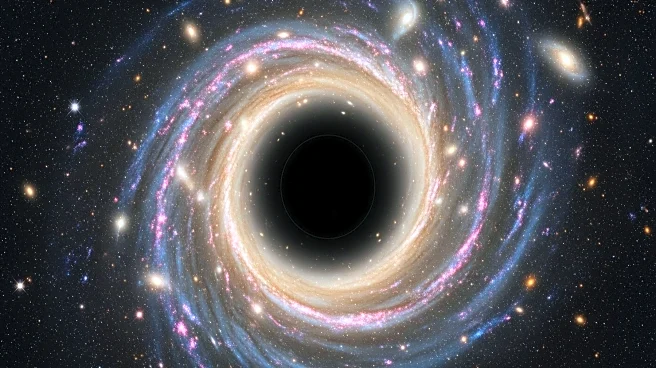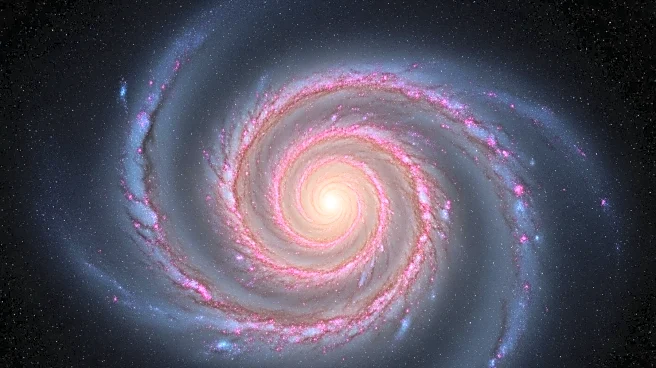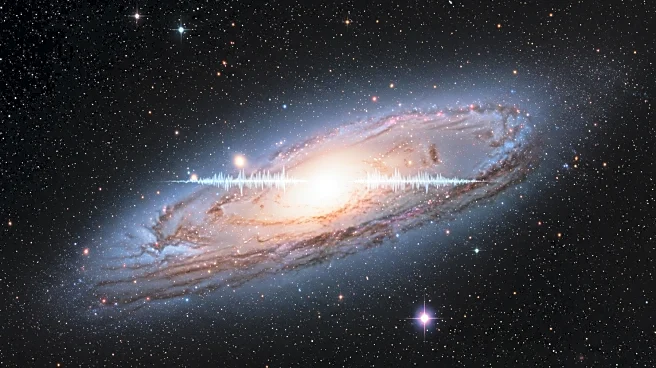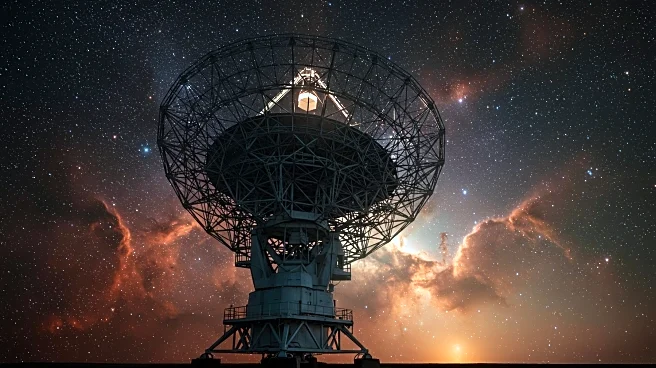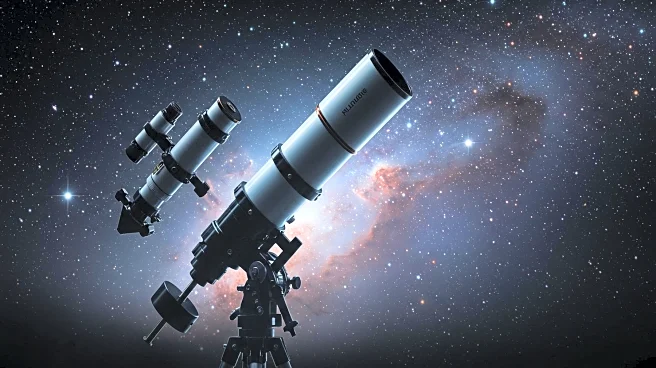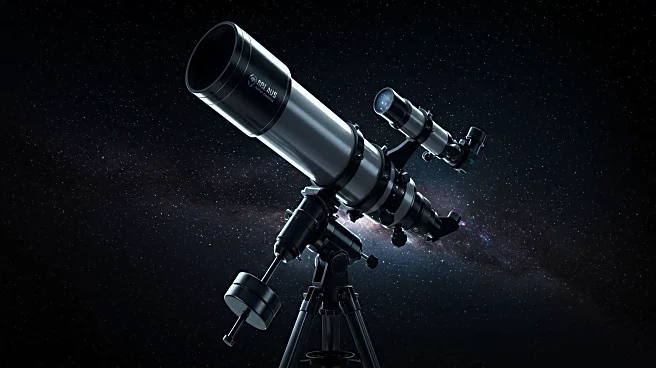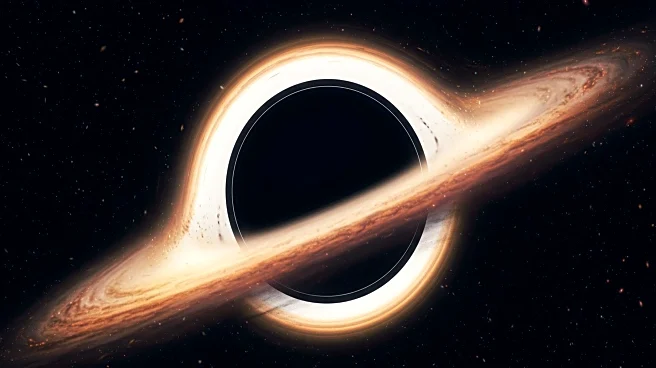What's Happening?
Researchers at Kansas State University have discovered a pattern in the rotational direction of ancient galaxies using the James Webb Space Telescope. Approximately 60% of these galaxies rotate clockwise, challenging the previous belief of random galactic rotations. This finding has led to a hypothesis that our universe might be trapped within a massive black hole, with the gravitational field influencing the rotational direction of galaxies. This theory could fundamentally alter cosmological models, proposing a universe governed by the distinct laws of a black hole's environment.
Why It's Important?
If the universe is indeed within a black hole, it would necessitate a reevaluation of fundamental cosmic principles, such as matter distribution and time flow. This hypothesis challenges existing theories about the universe's origins, structure, and ultimate fate, potentially leading to new models to describe cosmic behavior. The discovery emphasizes the importance of precise astronomical observations and the need to address potential observational biases in understanding cosmic phenomena.
What's Next?
Further investigation is required to validate the black hole hypothesis and explore alternative explanations for the observed galactic rotations. Researchers must consider the impact of observational bias, such as the Doppler effect, which can affect the perceived motion of galaxies. Continued exploration and observation of the cosmos, with enhanced tools like the JWST, could lead to transformative insights into the universe's mysteries.
